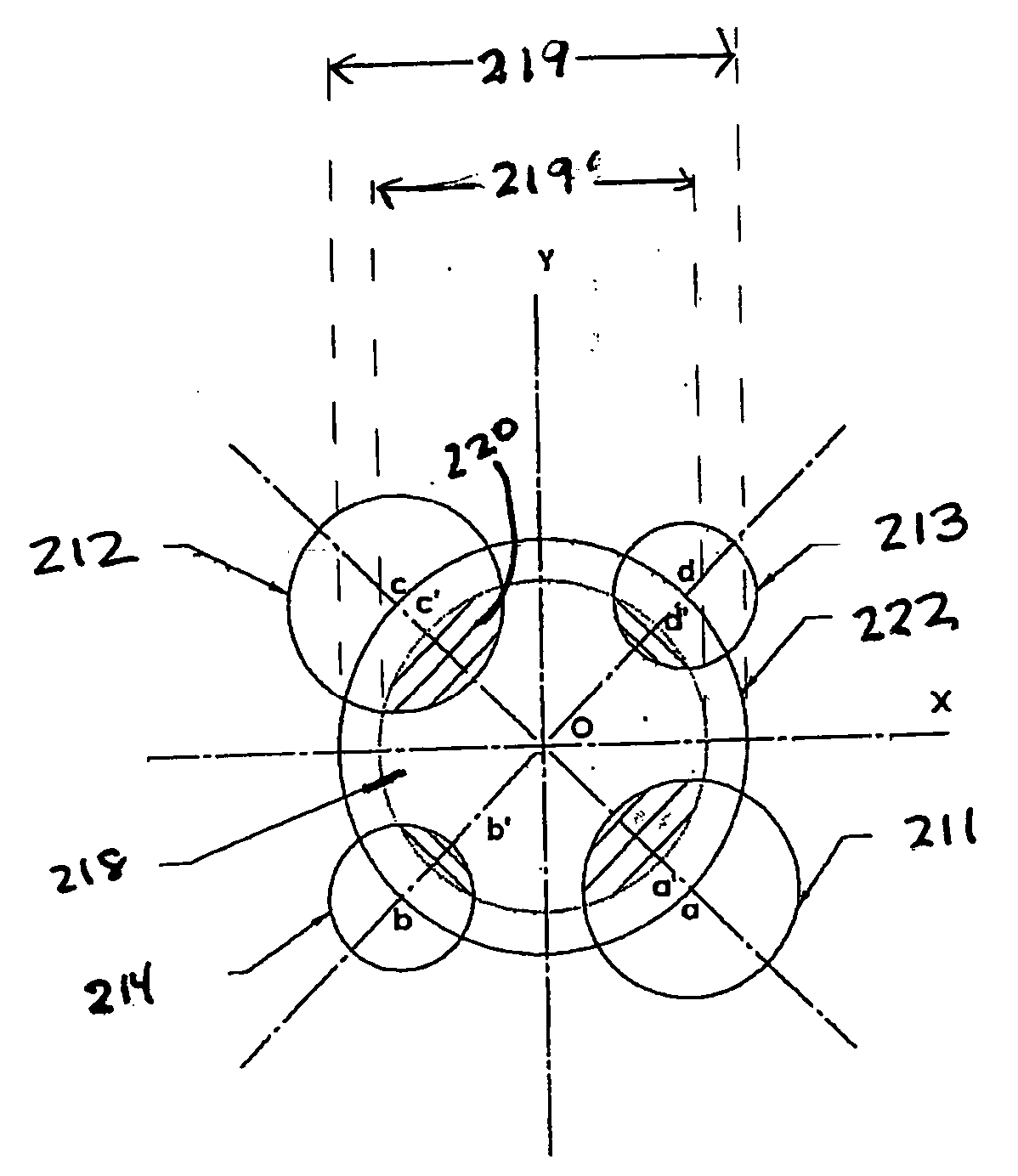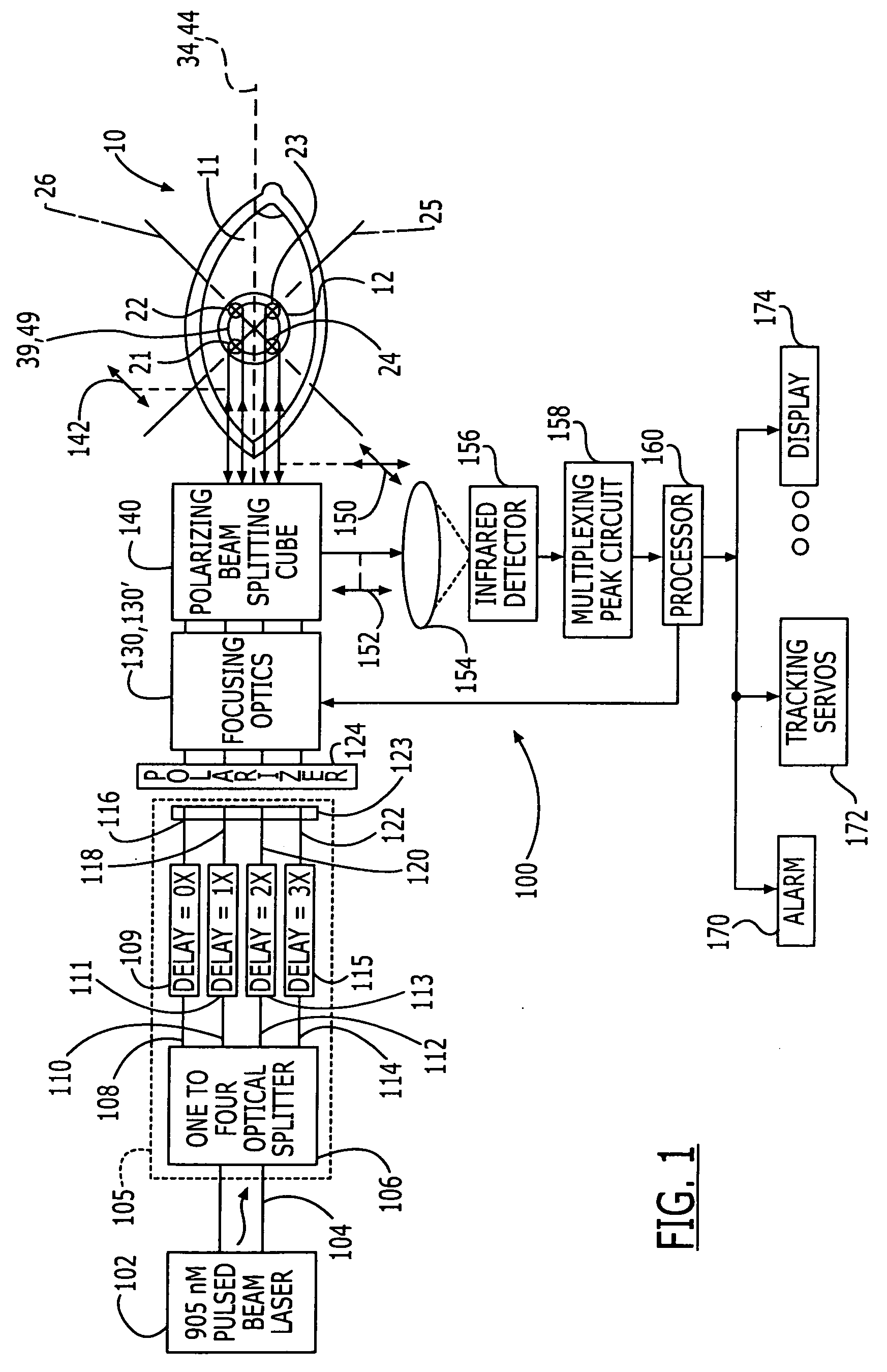Eye tracker and pupil characteristic measurement system and associated methods
a technology of pupil characteristic measurement and eye tracking device, which is applied in the field of eye tracking device for ophthalmic laser surgical system, can solve the problems of affecting the refractive outcome of surgery, affecting the accuracy of surgery, and the surgeon's reaction time is not fast enough to move the treatment laser in correspondence with eye movemen
- Summary
- Abstract
- Description
- Claims
- Application Information
AI Technical Summary
Benefits of technology
Problems solved by technology
Method used
Image
Examples
first embodiment
[0043] the zoom mechanism 30 comprises a pyramidal prism 31 having a plurality of, in a preferred embodiment four, reflective facets 32 (FIGS. 4 and 5). It will be understood by one of skill in the art that FIGS. 4 and 5 (and subsequently discussed FIGS. 6 and 7) are highly schematic representations in two dimensions for ease of presentation, four-sided pyramidal prisms being well known in the art.
[0044] The facets 32 meet at an apex 33 that points along an optical axis 34. It will also be understood by one of skill in the art that by “apex” is meant herein the point or sector at which the facets reach their smallest dimension, and that the prism may in fact comprise a truncated pyramid without a pointed apex.
[0045] An incident light beam 35 is directed onto each facet 32 of the prism 31 by an optical arrangement comprising a focusing lens 36 that is positioned to receive an incident light beam 35 and is adapted to image the respective incident light beam 35 to an image plane.
[004...
second embodiment
[0048] the zoom mechanism 40 comprises a pyramidal transmissive prism 41 having a plurality of, in a preferred embodiment four, facets 42 (FIGS. 6 and 7). The facets 42 meet at an apex 43 that points along an optical axis 44.
[0049] An incident light beam 45 is directed onto each facet 42 of the prism 41 by an optical arrangement comprising a focusing lens 46 that is positioned to receive an incident light beam 45 and is adapted to image the respective incident light beam 45 to an image plane.
[0050] Each incident light beam 45 refracted within the prism 41 to form a refracted beam 48 in a direction pointing toward the apex 43. The plurality of refracted beams 48, when incident upon a planar surface substantially normal to the optical axis 44, form the plurality of light spots 21-24 arrayed substantially in a square on an inscribed circle 49 (FIG. 1) about the optical axis 44.
[0051] The zooming mechanisms 30,40 further comprise a mechanism 50,60 for translating the prism 31,41 along...
PUM
 Login to View More
Login to View More Abstract
Description
Claims
Application Information
 Login to View More
Login to View More - R&D
- Intellectual Property
- Life Sciences
- Materials
- Tech Scout
- Unparalleled Data Quality
- Higher Quality Content
- 60% Fewer Hallucinations
Browse by: Latest US Patents, China's latest patents, Technical Efficacy Thesaurus, Application Domain, Technology Topic, Popular Technical Reports.
© 2025 PatSnap. All rights reserved.Legal|Privacy policy|Modern Slavery Act Transparency Statement|Sitemap|About US| Contact US: help@patsnap.com



